Research/Publications
 Gallery
Gallery
 Resume
Resume
 Scrapbook
Scrapbook
 Furry/Feathered
Furry/Feathered
Christina Vasilakis
Research/Publications
| M.F.A. Research |
| M.F.A. Thesis: Welcome to the House of the Future |
| Design of Educational Applications in Virtual Reality |
| NICE Collaborative Environment |
| Studying Fine Art: "Las Meninas" by Velazquez |
| User Centered HCI Design/M.S. Topic |
|
Argonne National Labs interface design using a user task centered approach |
| Early studies of interface toolkits in VR |
| Collaborative Publications |
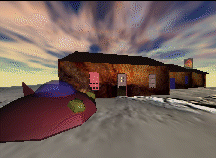 I completed the requirements for my Master of Fine Arts degree in Electronic Visualization in May, 1995
with the presentation of
CASA: Computer Augmentation for Smart Architectonics, the simulation of "smart
house" technology in virtual environments. In addition, this presentation is the initial of
research involving collaborative engagement of multiple participants in one virtual environment.
This project involved the combination of a number of various software applications and modelling
packages including Softimage, VRML-ready Open Inventor Models, and Open GL and homegrown software to
implement smart house intelligent agents, CAVE to CAVE interaction in CASA, voice and handwriting
recognition contributed by the talents of Jason Leigh and Craig Barnes. My M.F.A. Thesis,
Welcome to the House of the Future,
is available online.
I completed the requirements for my Master of Fine Arts degree in Electronic Visualization in May, 1995
with the presentation of
CASA: Computer Augmentation for Smart Architectonics, the simulation of "smart
house" technology in virtual environments. In addition, this presentation is the initial of
research involving collaborative engagement of multiple participants in one virtual environment.
This project involved the combination of a number of various software applications and modelling
packages including Softimage, VRML-ready Open Inventor Models, and Open GL and homegrown software to
implement smart house intelligent agents, CAVE to CAVE interaction in CASA, voice and handwriting
recognition contributed by the talents of Jason Leigh and Craig Barnes. My M.F.A. Thesis,
Welcome to the House of the Future,
is available online.
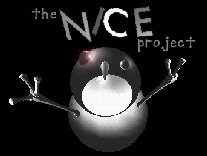 The NICE (Narrative Interactive Constructivist/Collaborative Environments) group is the product of
collaboration between students and faculty of the
Interactive Computing Environments
Lab and the Electronic Visualization Lab at the University of
Illinois at Chicago. We are mainly concerned with the development of children's learning environments
that are persistent and encourage collaboration between local and remote users within the same
virtual environment. Currently, the environment consists of an island where users are free to roam and
explore the topology, see their reflections in the ocean, and learn about simple horticultural topics by
the upkeep of a garden. The environment has been presented at a number of public gatherings such as
SIGGRAPH '96 and Thinkquest ceremony in Washington D.C.
The NICE (Narrative Interactive Constructivist/Collaborative Environments) group is the product of
collaboration between students and faculty of the
Interactive Computing Environments
Lab and the Electronic Visualization Lab at the University of
Illinois at Chicago. We are mainly concerned with the development of children's learning environments
that are persistent and encourage collaboration between local and remote users within the same
virtual environment. Currently, the environment consists of an island where users are free to roam and
explore the topology, see their reflections in the ocean, and learn about simple horticultural topics by
the upkeep of a garden. The environment has been presented at a number of public gatherings such as
SIGGRAPH '96 and Thinkquest ceremony in Washington D.C.
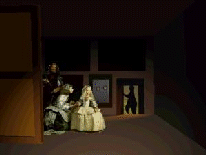 This project is ongoing research which involved the talents of a multi-disciplinary group that includes artists,
computer programmers and a filmmaker. Using virtual reality and multi-media, the painting, "Las Meninas", by
Diego Velazquez is recreated for the exploration of children in order to gain a better understanding of the
structure and composition of the painting. In addition, the painting becomes an actual architectural environment
to be explored by participants and the painting's subjects become 3D avatars that lead the viewer through the
environment and indicate points of interest that Velazquez explores in his painting. Such interests include the
exploration of multiple of perspective of the mirror, the addition paintings on the walls and the painting that
Velazquez, himself, paints within the painting.
This project is ongoing research which involved the talents of a multi-disciplinary group that includes artists,
computer programmers and a filmmaker. Using virtual reality and multi-media, the painting, "Las Meninas", by
Diego Velazquez is recreated for the exploration of children in order to gain a better understanding of the
structure and composition of the painting. In addition, the painting becomes an actual architectural environment
to be explored by participants and the painting's subjects become 3D avatars that lead the viewer through the
environment and indicate points of interest that Velazquez explores in his painting. Such interests include the
exploration of multiple of perspective of the mirror, the addition paintings on the walls and the painting that
Velazquez, himself, paints within the painting.
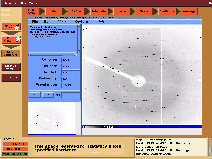 For the past two years, I have been working on the interface that will drive the beamline
software for use at Argonne's Structural Biology Center's
beamlines, part of the Advanced Photon Source project.
This research has been conducted using
a user centered approach to understand the needs of the scientists for this interface. The web
has been used to gather design feedback from the users who are located throughout the world.
This survey is located at http://www.sbc.anl.gov/intro.html.
For the past two years, I have been working on the interface that will drive the beamline
software for use at Argonne's Structural Biology Center's
beamlines, part of the Advanced Photon Source project.
This research has been conducted using
a user centered approach to understand the needs of the scientists for this interface. The web
has been used to gather design feedback from the users who are located throughout the world.
This survey is located at http://www.sbc.anl.gov/intro.html.
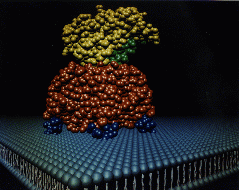 Brown, Maxine, Looking at Visualization: Applications for the Rest of Us," BYTE Magazine,
April '93, pp. 126-127.
Brown, Maxine, Looking at Visualization: Applications for the Rest of Us," BYTE Magazine,
April '93, pp. 126-127.